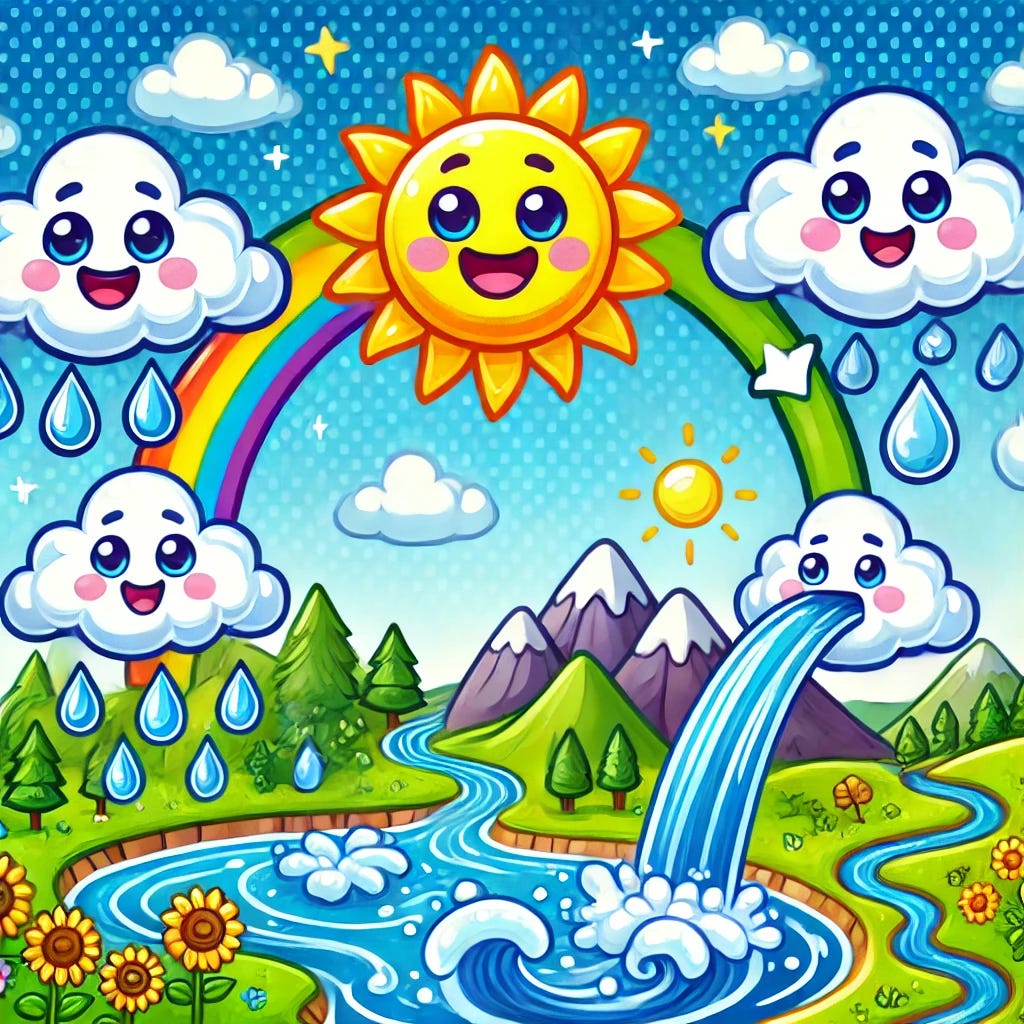Nature's Recycling System 🌍💧
Discover How Water Travels Through Nature's Amazing Journey!
Have you ever wondered how the water we drink, bathe in, and see in oceans and rivers keeps moving around the Earth? The answer lies in the water cycle, nature's incredible way of recycling water! In this blog, we'll break it down step-by-step in a way that's easy and fun to understand.
What Is the Water Cycle?
The water cycle is the continuous movement of water on, above, and below the surface of the Earth. It’s like a giant loop powered by the sun, helping water travel through different stages to keep our planet hydrated and healthy. Let’s dive into the main stages of the water cycle.
The Four Main Stages of the Water Cycle
a. Evaporation
It all starts with the sun. When the sun heats up water in oceans, lakes, and rivers, the water turns into vapor. This process is called evaporation. You might think of it as the water disappearing into the air, but it’s actually rising into the atmosphere as an invisible gas called water vapor.
Fun Fact: Your cup of tea gives off water vapor when it’s hot, just like how the sun heats the ocean!
b. Condensation
As the water vapor rises, it cools down in the sky. This cooling causes the vapor to turn back into tiny water droplets, forming clouds. This process is called condensation.
Imagine This: Clouds are like fluffy sponges filled with water waiting to fall.
c. Precipitation
When the clouds get too heavy with water, they release it as precipitation. This could be rain, snow, sleet, or hail, depending on the temperature.
Cool Tip: Next time it rains, think about how that water may have come from a faraway ocean or lake!
Collection
The precipitation eventually makes its way back to rivers, lakes, oceans, or into the ground. This is called collection. From here, the water either flows back into larger bodies of water or soaks into the ground to become groundwater.
Nature’s Trick: Groundwater often helps plants grow and fills underground reservoirs we use for drinking water.
3. Why Is the Water Cycle Important?
The water cycle isn’t just a fascinating process; it’s essential for life on Earth. Here’s why:
Provides Fresh Water: The cycle helps ensure we have clean water to drink and use.
Supports Ecosystems: Plants, animals, and humans all rely on the water cycle for survival.
Balances Climate: It helps regulate temperature and weather patterns around the world.
Conclusion The water cycle is a remarkable natural process that shows how interconnected everything on Earth is. From the sun’s warmth to the clouds in the sky and the rain that falls to the ground, the water cycle is nature’s way of ensuring life keeps thriving. Next time you take a sip of water or see a raincloud, remember you’re witnessing a part of this endless, magical journey!


